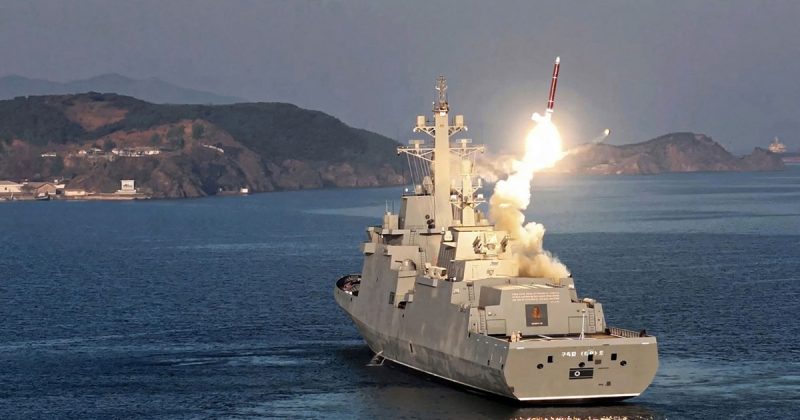
North Korea has made a significant stride in modernizing its naval capabilities, showcasing its first-ever destroyer and conducting successful missile test-firings. Supreme Leader Kim Jong Un personally oversaw these events, underscoring the importance of this development to the nation’s military strategy.
The 5,000-ton destroyer, unveiled last week, boasts what North Korea claims to be its most powerful weaponry. Kim Jong Un himself hailed the ship’s construction as a major breakthrough in the modernization of the country’s naval forces. While independent analysts suggest the destroyer’s construction likely involved Russian assistance, its deployment represents a considerable advancement for North Korea’s navy, which previously lagged behind its South Korean counterpart. Experts highlight the vessel’s capacity to carry approximately 80 missiles, enhancing both its offensive and defensive capabilities.
The recent missile test-firings, which included supersonic and strategic cruise missiles, anti-aircraft missiles, automatic guns, and electronic jamming guns, were observed by Kim Jong Un himself. He reportedly expressed satisfaction with the destroyer’s weapon systems and directed a rapid acceleration in efforts to equip the navy with nuclear capabilities. The Korean Central News Agency (KCNA) reported that Kim’s observations emphasized the need to bolster North Korea’s deterrent capabilities in response to what he described as escalating U.S.-led hostility.
This development coincides with escalating tensions on the Korean Peninsula. North Korea’s ongoing weapons testing program, aimed at expanding its nuclear and missile arsenals, has heightened regional anxieties. Furthermore, the recent confirmation that North Korea has deployed troops to support Russia’s war in Ukraine adds another layer of complexity to the geopolitical landscape. The collaboration between North Korea and Russia raises concerns about potential technology transfers and further military and economic support for Pyongyang, enhancing North Korea’s ability to strengthen its already aggressive military posture.
Independent analysis of the new destroyer suggests that some key components, such as the anti-air radar system and potentially the engine system and some anti-air weapons, originate from Russia. This collaboration underscores the deepening military ties between the two nations, which poses significant challenges to regional stability and international security. The strategic implications of a North Korean destroyer equipped with advanced weaponry, particularly its potential impact on air defense capabilities, cannot be overlooked. While South Korea maintains a superior naval fleet, the North Korean destroyer’s capabilities still represent a substantial threat, requiring a reassessment of regional defense strategies.
The events surrounding the new destroyer and missile tests highlight North Korea’s continued pursuit of military modernization and its increasingly assertive stance on the global stage. The interplay between these developments and the ongoing conflict in Ukraine will undoubtedly continue to shape the geopolitical dynamics in the region for the foreseeable future.










